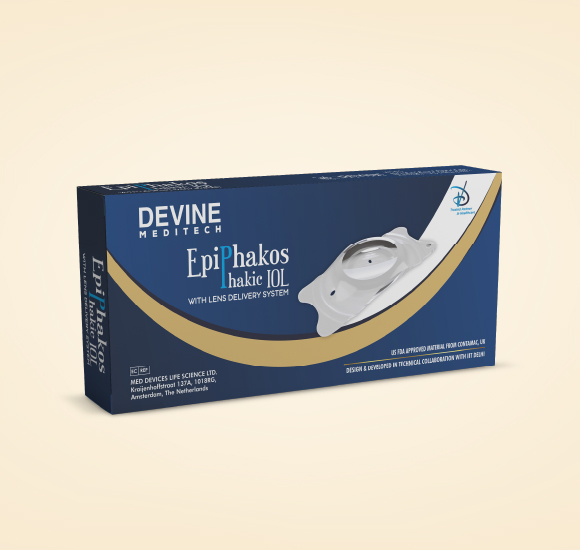
Implanting a Phakic lOL is a surgical technique and hence, as there are benefits, there are potential disadvantages also. That is why every candidate planning for Phakic IOL implantation, must grasp the boundaries and hazards of phakic intraocular lens implant surgery. We at Devine Meditech provide the most technologically advanced with superior optical parameters Phakic IOL in India. Before considering surgery to implant a phakic IOL, we suggest you to consider its risk that can help you to avoid being affected by it side affects.
Phakic IOL is a type of IOL placed in the eye to treat moderate to severe myopia in individuals who cannot undergo LASIK or other refractive operations. It is kept between the cornea and the native lens and stays in place throughout the surgery. Besides benefits it has also some risks of getting impacted by phakic IOL surgery. Here are some risks that you can get:
• You may lose vision
• Experience debilitating visual issues
• Increase requirement of further eye surgery to relocate, replace, or eliminate the phakic lens implantation
• You can be undertreated or over-treated
• Intraocular pressure can be increased
• Cataract can be developed, and more.

You may lose vision: Some people lose eyesight after phakic IOL implant surgery, which cannot be rectified with contact lenses, glasses, or another operation. The level of vision loss can be substantial.
Experience debilitating visual issues: Some patients have glare, shadows, double vision, and/or impaired vision in low-light environments, which can make it hard to perform jobs like driving, especially at night or in foggy weather.
Increase requirement of further eye surgery to relocate, replace, or eliminate the phakic lens implantation: These operations may be required for your security or to enhance your vision. If the lens power is not appropriate, a phakic lens exchange may be required. If the lens does not stay in the appropriate location, is the wrong size, or produces debilitating visual issues, you may need to have it relocated, removed, or changed. Every additional surgical treatment carries its hazard.
You can be undertreated or over-treated: Many treated patients do not have 20/20 eyesight following surgery. The implanted phakic lens's power could be too high or low. This is due to the challenge of finding the appropriate power lens. This means that you will most likely still require glasses or contact lenses to do certain tasks. For example, you may require reading glasses even if you didn't require them before surgery. If the power of the previously implanted lens was insufficient for your needs, you may require a second surgery to remove it.
Intraocular pressure can be increased: You may suffer increased pressure inside your eye following surgery, which may necessitate medical treatment or surgery to reduce it. You may require long-term therapy with glaucoma drugs. If your blood pressure is too high for a prolonged period, you may lose your vision.
Cataract can be developed: You may develop a cataract or impairing of the natural lens. A cataract's development time varies substantially. If your cataract grows and develops sufficiently to seriously reduce your vision, you may need cataract surgery. Your doctor will need to get rid of both your natural and phakic lenses.
When it comes to vision correction, Phakic Intraocular Lens (IOL) surgery offers a promising option for those who are not good candidates for regular LASIK or PRK operations. Phakic IOL surgery significantly improves visual acuity and standard of life by effectively treating refractive problems like myopia, hyperopia, and astigmatism by implanting a specialised lens above the native lens of the eye. Phakic IOL surgery does, however, have inherent dangers that patients should carefully evaluate, just like any surgical operation. Potential side effects include infection, inflammation, glare, halos, and the infrequent development of cataracts are among these dangers.
It is imperative that patients who are considering this treatment receive in-depth pre-operative assessments and meet with skilled ophthalmologists in order to determine their appropriateness and go over the possible hazards. Notwithstanding these dangers, Phakic IOL surgery may be beneficial for a large number of patients, especially those with significant refractive imperfections or thin corneas that make them ineligible for alternative corrective measures. The safety and efficacy of Phakic IOL surgery are improving due to technological and surgical developments, making it a more and more practical choice for restoring vision.